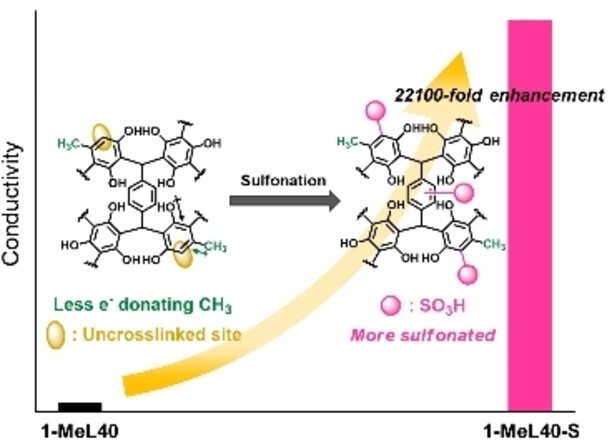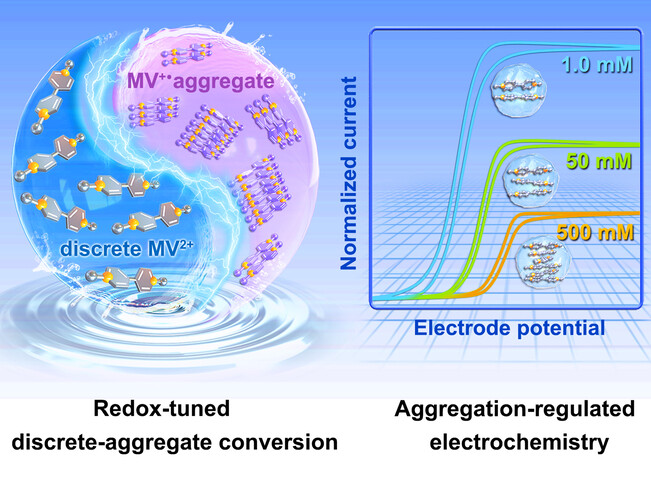Journal list menu
Export Citations
Download PDFs
Titelbild
Titelbild: Alternately π-Stacked Systems Assisted by o-Carborane: Dual Excimer Emission and Color Modulation by Bcage-Methylation (Angew. Chem. 2/2023)
- First Published: 22 December 2022
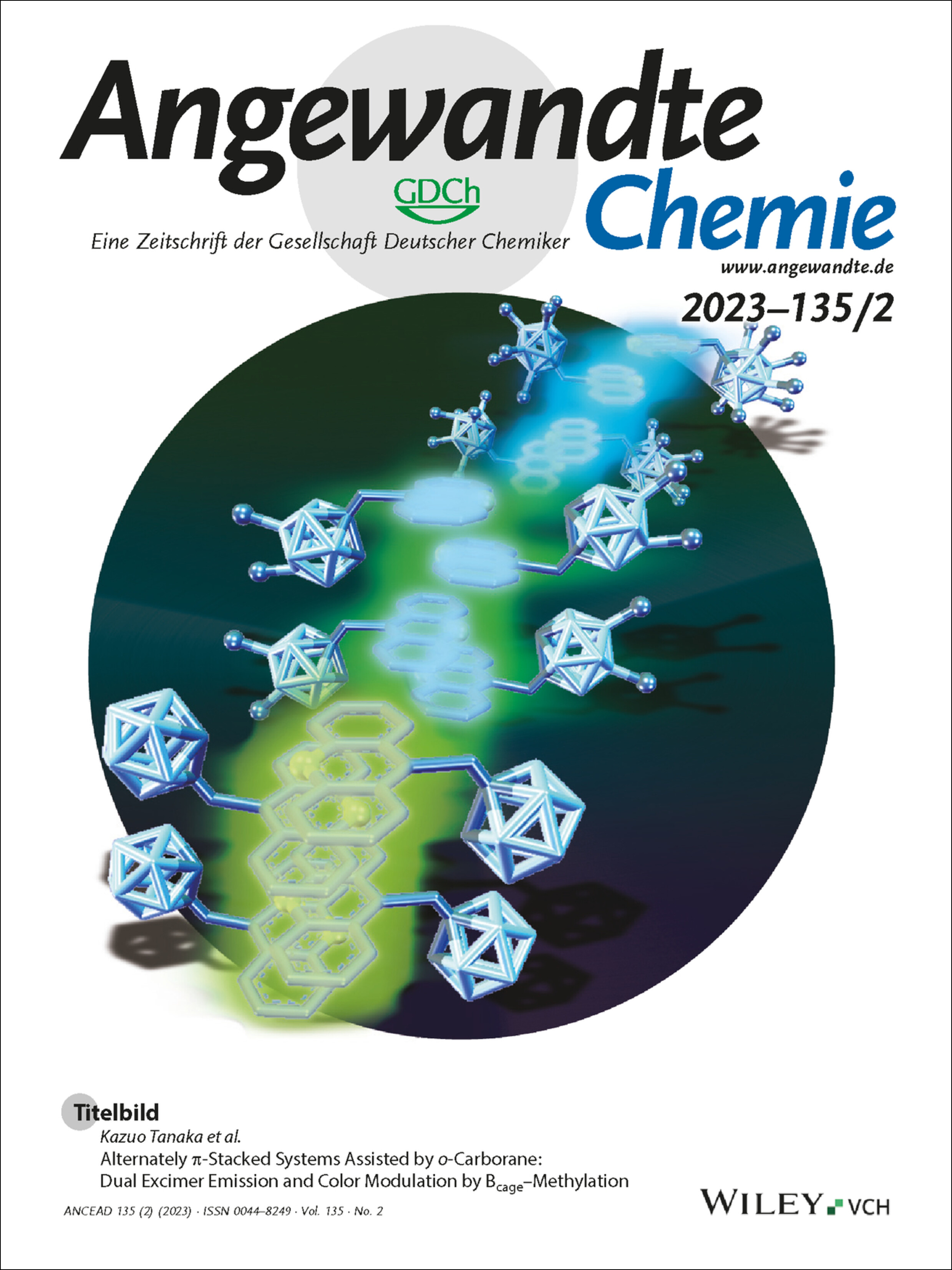
Unique solid-state emission from three types of acridine-tethered boron clusters, o-carboranes, with variable degrees of methylation, is reported by Kazuo Tanaka et al. in their Research Article (e202214397). It is found that monomer emission, excimer emission from the π-stacked intra-dimer unit, and excimer emission from the π-stacked inter-dimer unit can be simultaneously obtained. Consequently, not only drastic luminescent color changes but also thermochromic luminescence properties were observed.
Innentitelbild: Darobactine mit Überlegener Antibiotischer Aktivität Generiert durch Strukturgeleitetes Kryo-EM-Biosynthese-Design (Angew. Chem. 2/2023)
- First Published: 14 December 2022
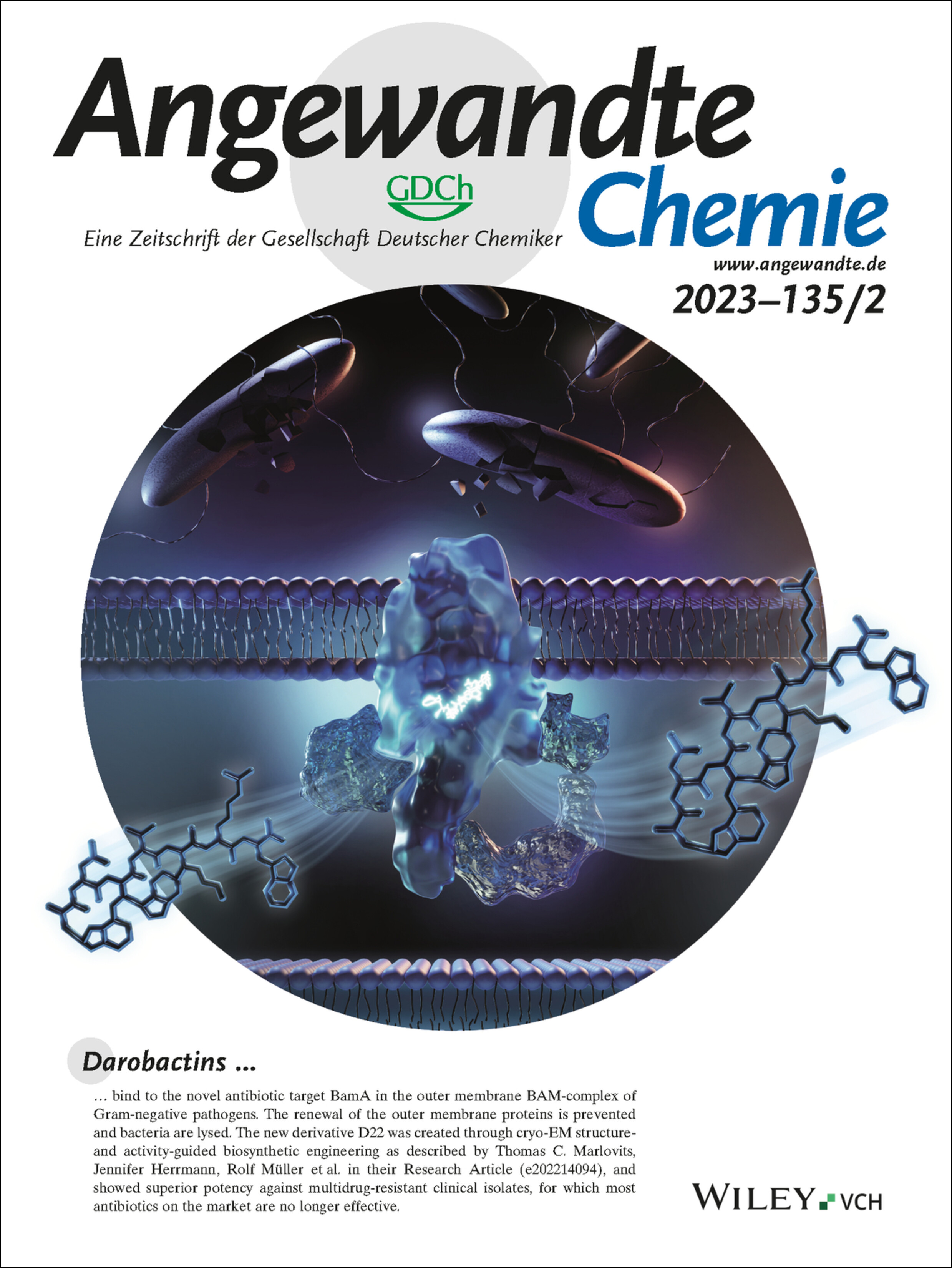
Darobactins bind to the novel antibiotic target BamA in the outer membrane BAM-complex of Gram-negative pathogens. The renewal of the outer membrane proteins is prevented and bacteria are lysed. The new derivative D22 was created through cryo-EM structure- and activity-guided biosynthetic engineering as described by Thomas C. Marlovits, Jennifer Herrmann, Rolf Müller et al. in their Research Article (e202214094), and showed superior potency against multidrug-resistant clinical isolates, for which most antibiotics on the market are no longer effective.
Innenrücktitelbild: Kontrolle der Selektivität in Shuttle-Heterodifunktionalisierungen: Elektrochemische Transfer-Halothiolierung von Alkinen (Angew. Chem. 2/2023)
- First Published: 02 December 2022
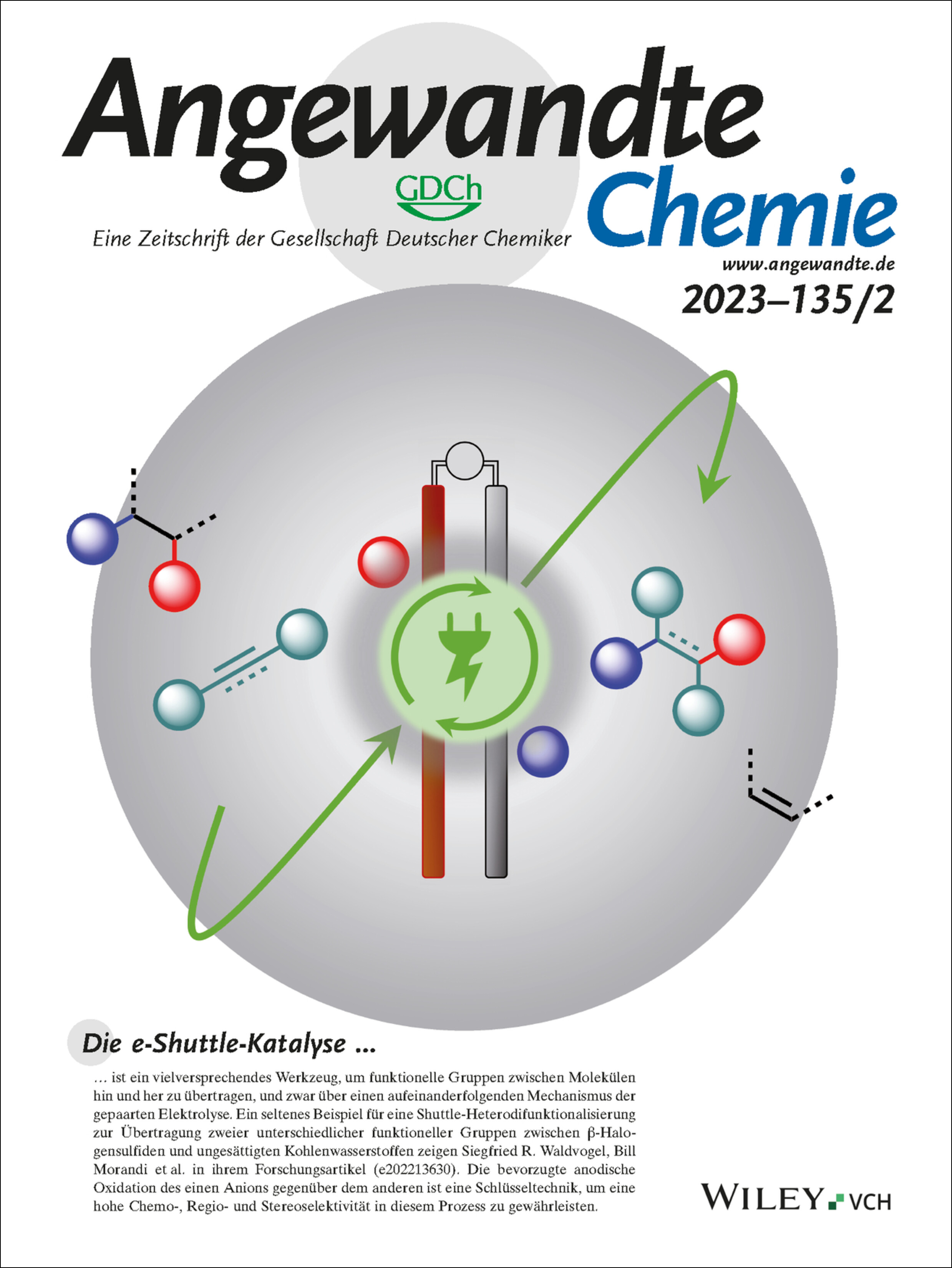
Die e-Shuttle-Katalyse ist ein vielversprechendes Werkzeug, um funktionelle Gruppen zwischen Molekülen hin und her zu übertragen, und zwar über einen aufeinanderfolgenden Mechanismus der gepaarten Elektrolyse. Ein seltenes Beispiel für eine Shuttle-Heterodifunktionalisierung zur Übertragung zweier unterschiedlicher funktioneller Gruppen zwischen β-Halogensulfiden und ungesättigten Kohlenwasserstoffen zeigen Siegfried R. Waldvogel, Bill Morandi et al. in ihrem Forschungsartikel (e202213630). Die bevorzugte anodische Oxidation des einen Anions gegenüber dem anderen ist eine Schlüsseltechnik, um eine hohe Chemo-, Regio- und Stereoselektivität in diesem Prozess zu gewährleisten.
Rücktitelbild: Highly Luminescent One-Dimensional Organic–Inorganic Hybrid Double-Perovskite-Inspired Materials for Single-Component Warm White-Light-Emitting Diodes (Angew. Chem. 2/2023)
- First Published: 15 December 2022
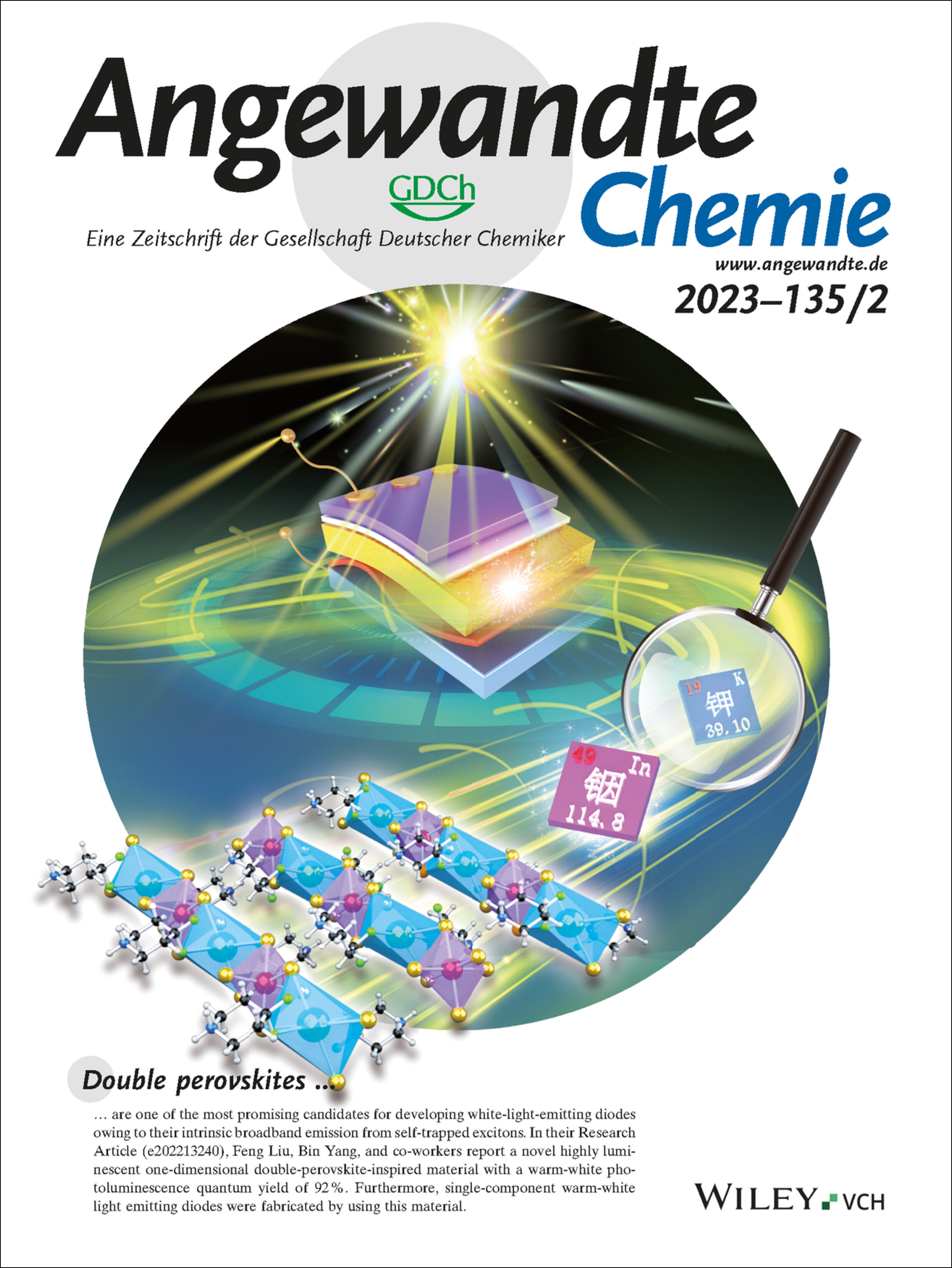
Double perovskites are one of the most promising candidates for developing white-light-emitting diodes owing to their intrinsic broadband emission from self-trapped excitons. In their Research Article (e202213240), Feng Liu, Bin Yang, and co-workers report a novel highly luminescent one-dimensional double-perovskite-inspired material with a warm-white photoluminescence quantum yield of 92 %. Furthermore, single-component warm-white light emitting diodes were fabricated by using this material.
Frontispiz
Frontispiz: A Highly Compatible Phototrophic Community for Carbon-Negative Biosynthesis
- First Published: 02 January 2023
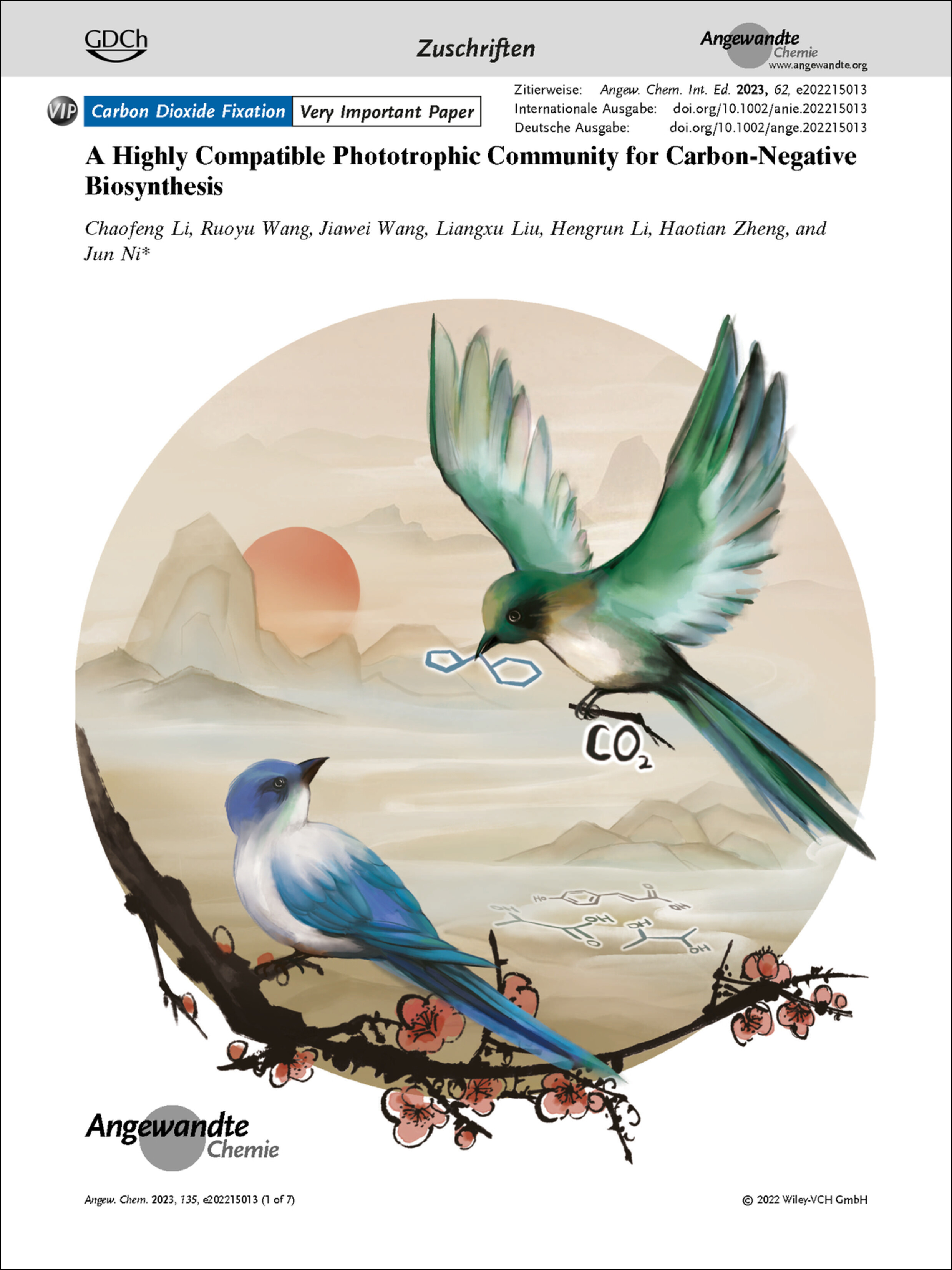
Biocatalysis. In their Communication (e202215013), Jun Ni et al. report the development of a phototrophic community by integrating a CO2 sequestration module and a super-coupled module. Various chemicals could be directly synthesized from CO2.
Frontispiz: Intrinsically Stretchable Electroluminescent Elastomers with Self-Confinement Effect for Highly Efficient Non-Blended Stretchable OLEDs
- First Published: 02 January 2023
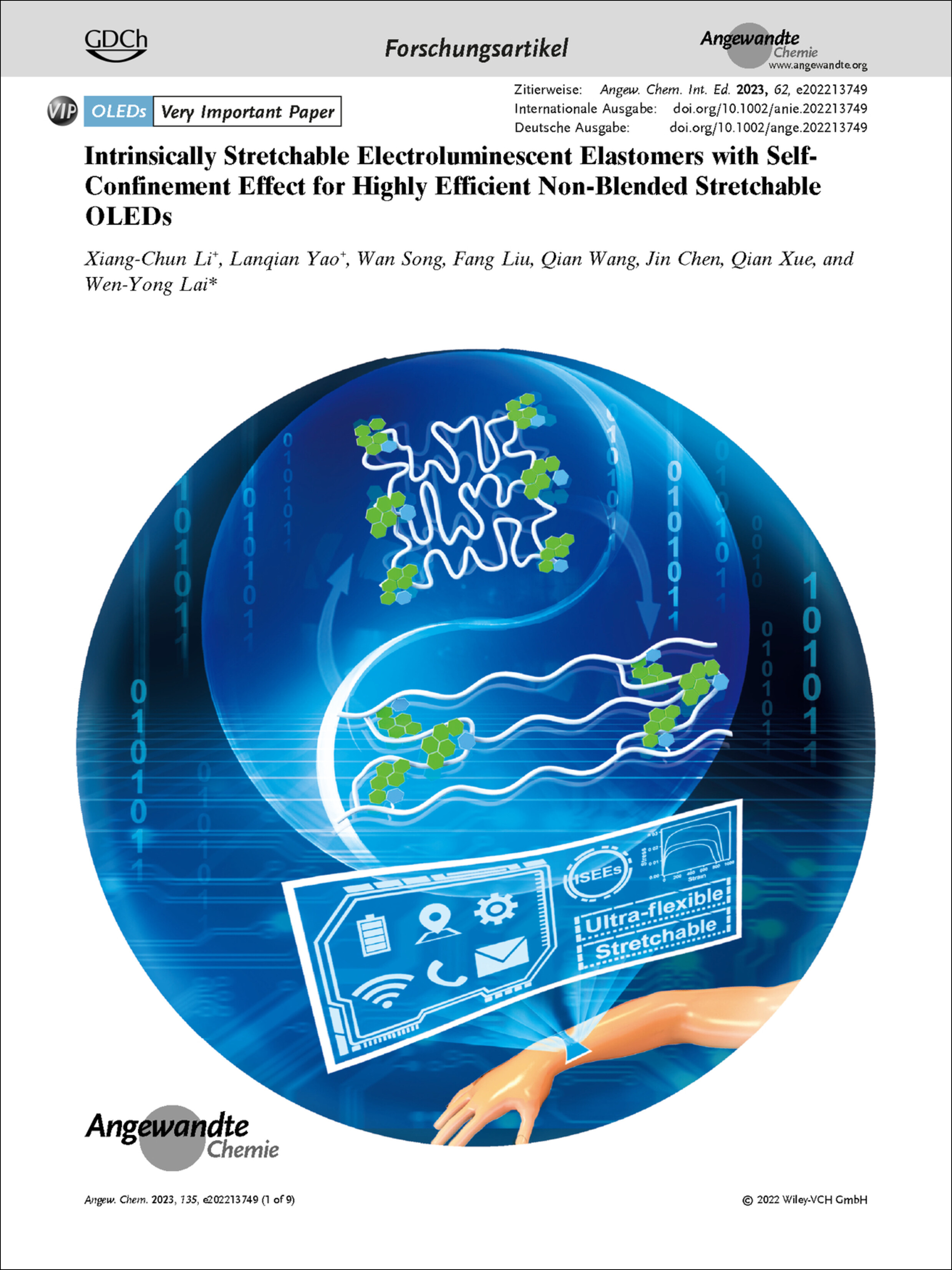
Organic Electronics. Intrinsically stretchable electroluminescent elastomers for highly efficient non-blended stretchable organic light-emitting diodes are reported by Wen-Yong Lai et al. in their Research Article (e202213749).
Gast-Editorial
ChemRxiv
Five Years of ChemRxiv: Where We Are and Where We Go From Here
- First Published: 02 December 2022
Graphisches Inhaltsverzeichnis
Graphisches Inhaltsverzeichnis: Angew. Chem. 2/2023
- First Published: 02 January 2023
Introducing …
Nieves López-Salas
- First Published: 02 December 2022

“The most important quality of a mentor is empathy, understanding that every person is unique and has or is experiencing a different reality and needs different advice … My science ‘heroes’ are Marie Curie, for her two Nobel Prizes and two Carbon Queens, Rosalind Franklin and Mildred Dresselhaus …” Find out more about Nieves López-Salas in her Introducing … Profile.
Highlights
Mechanochemistry
Temperature-Controlled Mechanochemistry Unlocks the Nickel-Catalyzed Suzuki–Miyaura-Type Coupling of Aryl Sulfamates at Different Scales
- First Published: 04 November 2022

A recent report from Leitch, Browne and co-workers demonstrated how a programmable jar heater delivers an efficient methodology for the Suzuki–Miyaura-type cross coupling reaction of aryl sulfamates and aryl boronic acid species. This methodology can be readily upscaled 200-fold using twin-screw extrusion methodologies, demonstrating scalability of mechanochemical catalytic processes.
Viewpoint Articles
Green Chemistry
Integrating Green Chemistry into Chemistry Education
- First Published: 08 December 2022
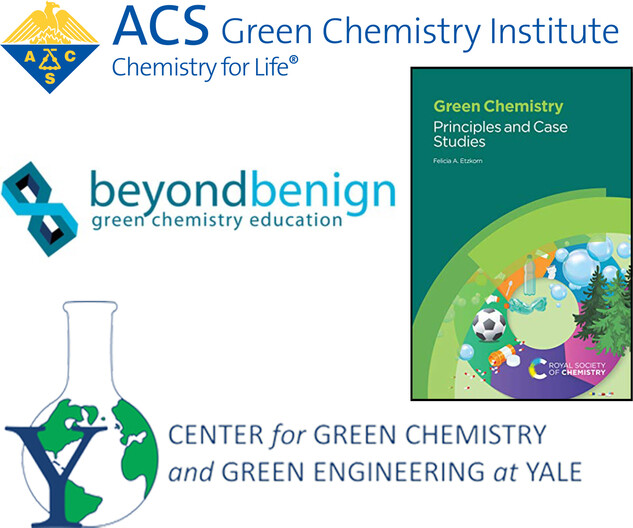
Give your chemistry classroom a green overhaul with resources from the American Chemical Society Green Chemistry Institute, Beyond Benign, and the Center for Green Chemistry & Green Engineering at Yale. Many green chemistry online resources, journals, and textbooks for classroom and laboratory are available. Urgent adoption of these resources is needed.
Kurzaufsätze
Nanoplastics
Spectro-Microscopic Techniques for Studying Nanoplastics in the Environment and in Organisms
- First Published: 24 October 2022
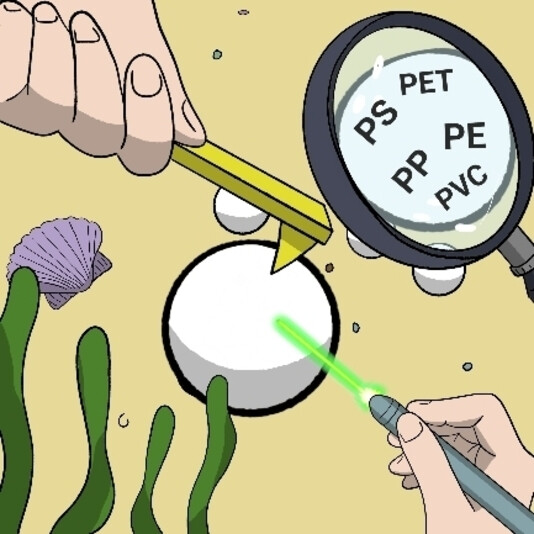
Nanoplastics (NPs) pose a threat to the environment and human health but are challenging to detect and characterize in environmental samples. This Minireview covers established imaging and characterization techniques, with a focus on micro-spectroscopic techniques. More exotic advanced techniques to measure NP morphology and chemical fingerprints simultaneously are discussed, and challenges in detection of NPs using high-resolution imaging are outlined.
Thermoelectrics
Advancement of Electrochemical Thermoelectric Conversion with Molecular Technology
- First Published: 14 October 2022
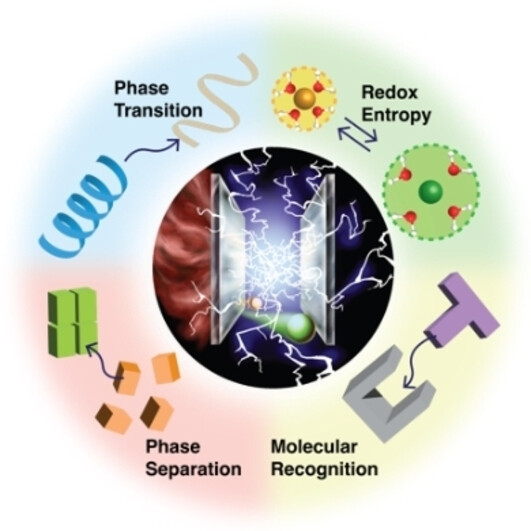
Thermocells are a type of battery that produces electricity from a temperature difference between the two electrodes. Recent studies have shown various molecular technologies can be effectively used in thermocells to increase the voltage. This Minireview provides a thorough comparison of four basic strategies—redox entropy, molecular recognition, phase separation, and phase transition—for boosting the thermoelectric efficiency.
Aufsätze
Heterocycles
Transition-Metal-Catalyzed Denitrogenative Annulation to Access High-Valued N-Heterocycles
- First Published: 13 October 2022
Zuschriften
Carbon Dioxide Fixation | Very Important Paper
A Highly Compatible Phototrophic Community for Carbon-Negative Biosynthesis
- First Published: 15 November 2022

A highly compatible phototrophic community (HCPC) was developed through the integration of a CO2 sequestration module and a super-coupled module, V. natriegens. Based on the HCPC platform, various chemicals could be directly synthesized from CO2, enabling the overall release of −22.27 to −606.59 kgCO2e kg−1 in the end products. This study provides design guidance for photosynthetic communities and new opportunities for carbon-negative production.
Heterocycles
Bio-Inspired Deaminative Hydroxylation of Aminoheterocycles and Electron-Deficient Anilines
- First Published: 22 November 2022
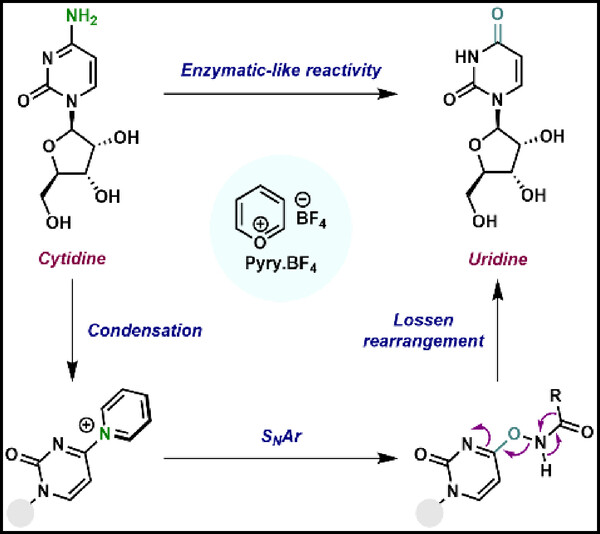
Herein, we report a user friendly, scalable and safe procedure to convert aminoheterocycles to their hydroxylated analogues with a pyrylium tetrafluoroborate salt in combination with a hydroxamic acid. The protocol is characterized by a broad functional group tolerance, permitting the selective modification of biorelevant molecules. Mechanistic experiments allowed the identification of key intermediates involved throughout the transformation.
Na-Ion Batteries | Hot Paper
Inlaying Bismuth Nanoparticles on Graphene Nanosheets by Chemical Bond for Ultralong-Lifespan Aqueous Sodium Storage
- First Published: 17 November 2022
Small Molecule Activation | Hot Paper
Reversible Dihydrogen Activation and Catalytic H/D Exchange with Group 10 Heterometallic Complexes
- First Published: 09 November 2022

Reaction of a hexagonal planar palladium complex having a [PdMg3H3] core with H2 is reversible and leads to the formation of a new [PdMg2H4] tetrahydride species. DFT calculations support a mechanism for H2 activation involving a ligand-assisted oxidative addition to Pd. These findings were exploited to develop a catalytic protocol for H/D exchange into magnesium hydride and zinc hydride bonds.
Oxidations | Hot Paper
Intertwining Olefin Thianthrenation with Kornblum/Ganem Oxidations: Ene-type Oxidation to Furnish α,β-Unsaturated Carbonyls
- First Published: 21 November 2022

A metal-free double oxidation of unactivated alkenes has been developed to deliver unsaturated conjugated carbonyls. This practical procedure allows valorization of the olefinic feedstock with high chemo- and stereoselectivity as demonstrated by the syntheses of difficult-to-access building blocks and industrially relevant pheromones and kairomones.
Cross-Coupling | Hot Paper
Synthesis of α-Quaternary β-Lactams via Copper-Catalyzed Enantioconvergent Radical C(sp3)−C(sp2) Cross-Coupling with Organoboronate Esters
- First Published: 10 November 2022
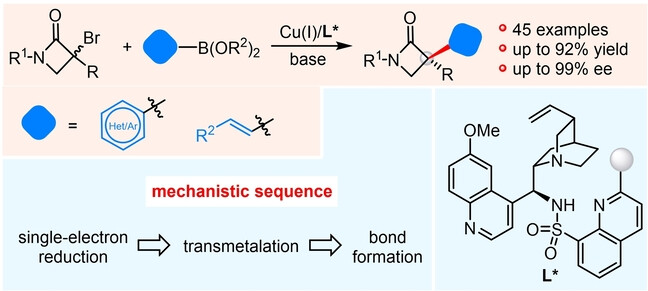
Copper-catalyzed enantioconvergent radical C(sp3)−C(sp2) cross-coupling of tertiary alkyl bromides with organoboronate esters is developed to access synthetically valuable α-quaternary chiral β-lactams. The success of this work relies on the utilization of chiral N,N,N-ligands to forge the sterically congested C(sp3)−C(sp2) bonds.
Sodium-ion Batteries | Very Important Paper
Dual-Function Presodiation with Sodium Diphenyl Ketone towards Ultra-stable Hard Carbon Anodes for Sodium-Ion Batteries
- First Published: 11 November 2022
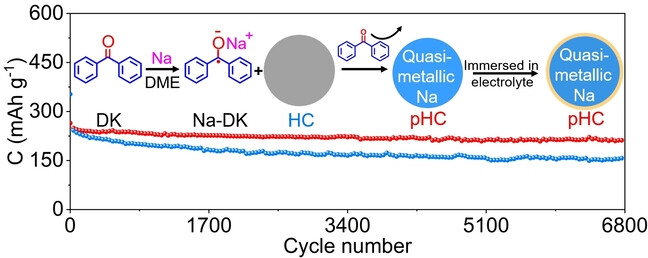
Sodium diphenyl ketone is applied as a reducing reagent to compensate irreversible Na uptake at oxygen-containing functional groups and react with defective carbon for quasi-metallic Na to initiate robust SEI. It leads to ICE of 99.2 % and capacity retention of ≈100 % for 700 cycles in the full cells of presodiated hard carbon//Na3V2(PO4)3.
Natural Products Synthesis
Asymmetric Total Synthesis of Hasubanan Alkaloids: Periglaucines A–C, N,O-Dimethyloxostephine and Oxostephabenine
- First Published: 10 November 2022

Asymmetric total synthesis of the hasubanan alkaloids periglaucines A–C, N,O-dimethyloxostephine and oxostephabenine is described. The key strategies include: 1) a RhI-catalyzed regio- and diastereoselective Hayashi-Miyaura reaction; 2) an intramolecular photoenolization/Diels–Alder (PEDA) reaction; and 3) bio-inspired intramolecular Michael addition and transannular acetalization.
Zn Batteries
Empowering Zn Electrode Current Capability Along Interfacial Stability by Optimizing Intrinsic Safe Organic Electrolytes
- First Published: 12 November 2022
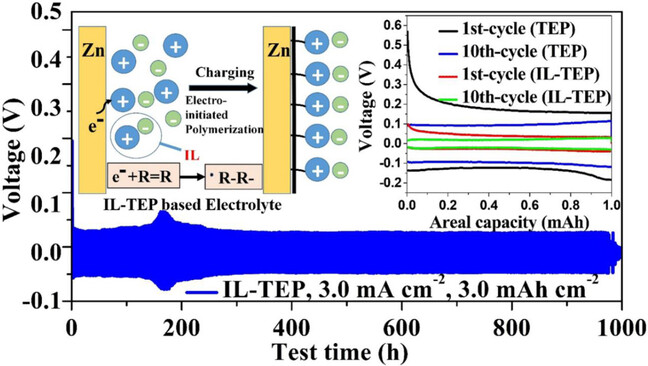
The electrochemical performances of Zn metal anodes are adjusted using functionalized ionic liquid and phosphate-based safe organic solvents, resulting in high Columbic efficiency (CE) of over 99 %, long cycle life up to 5.0 mA cm−2, and large areal capacity of 10 mAh cm−2. The interface derived from ionic liquid effectively accelerates the Zn nucleation, ensures smooth deposition, and reduces side reactions.
Porous Coordination Polymers | Hot Paper
Fine Pore-Structure Engineering by Ligand Conformational Control of Naphthalene Diimide-Based Semiconducting Porous Coordination Polymers for Efficient Chemiresistive Gas Sensing
- First Published: 15 November 2022

Conjugated 3D naphthalene diimide (NDI) based conductive porous coordination polymers (PCPs) with tunable conductivity and pore structure are developed as chemiresistors for room-temperature gas sensors. The Zn−pyNDI can serve as a room-temperature operable chemiresistive sensor selective to acetone.
Analytical Methods
Electrophoresis-Assisted Multilayer Assembly of Nanoparticles for Sensitive Lateral Flow Immunoassay
- First Published: 10 November 2022
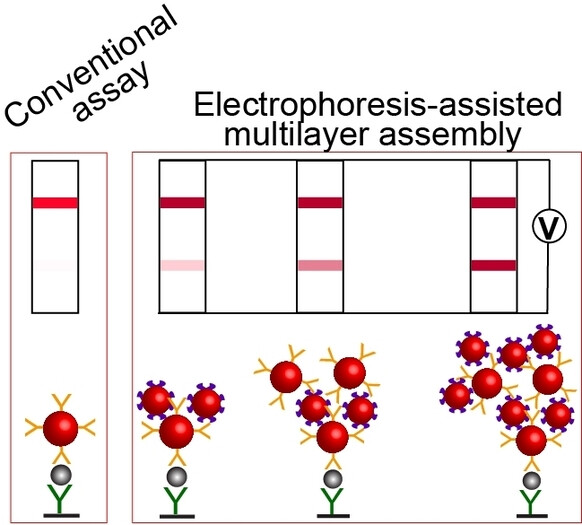
We report a universal approach for reducing the limit of detection of lateral flow immunoassay. This approach utilizes electrophoresis-driven migration of biotin- and streptavidin-modified gold nanoparticles for layer-by-layer assembly of aggregates directly on the test strip. As a result, a 60-times lower limit of detection of hepatitis B antigen is achieved.
Forschungsartikel
OLEDs | Very Important Paper
Intrinsically Stretchable Electroluminescent Elastomers with Self-Confinement Effect for Highly Efficient Non-Blended Stretchable OLEDs
- First Published: 09 November 2022

Achieving high-performance electroluminescence under large deformation remains a grand challenge. In this contribution, a general concept based on the self-confinement effect has been proposed for the design and synthesis of non-blended intrinsically stretchable electroluminescent elastomers (ISEEs). High-performance non-blended stretchable OLEDs have been constructed based on the resulting ISEEs.
Crystal Engineering | Hot Paper
Alternately π-Stacked Systems Assisted by o-Carborane: Dual Excimer Emission and Color Modulation by Bcage-Methylation
- First Published: 03 November 2022
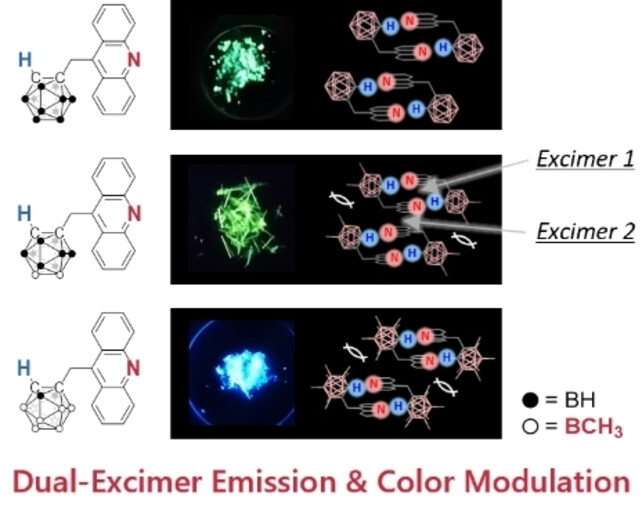
Precisely designed dual-excimer emissive crystals have been synthesized in which two types of π-stacking patterns coexist alternately in the crystalline state. Consequently, two kinds of excimer emission are observed in the different wavelength regions. Moreover, the steric hindrance of the methyl substituent perturbs the intensity ratio of the two excimer emissions and the fluorescence color can be tuned.
Cyclizations
Visible Light-Mediated Cyclisation Reaction for the Synthesis of Highly-Substituted Tetrahydroquinolines and Quinolines
- First Published: 07 November 2022

A mild one-pot condensation/light-mediated cyclisation reaction leading to a diverse range of densely functionalised tetrahydroquinoline and quinoline products is described, proceeding via divergent electrocyclisation and photoredox pathways, respectively. Thorough exploration of the reaction substrate scope, reaction intermediates and mechanistic pathways uncovers the key driving forces for the observed reactivity and stereochemistry.
Protein Degradation
Aptamer Inhibits Tumor Growth by Leveraging Cellular Proteasomal Degradation System to Degrade c-Met in Mice
- First Published: 21 October 2022
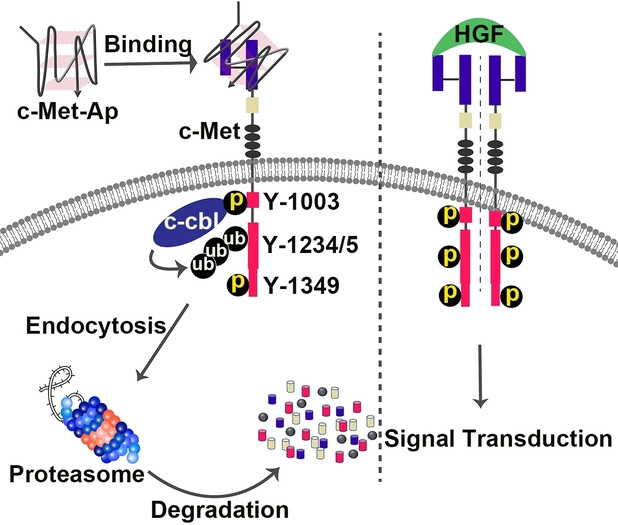
We report a new mechanism where aptamer leverages cellular proteasomal degradation system to degrade protein for cancer treatment. A DNA aptamer binds to extracellular domain of mesenchymal-epithelial transition factor (c-Met), and induces c-Met phosphorylation at Y1003 and Y1349. The phosphorylation of Y1003 recruits the E3 ubiquitin ligase casitas B-lineage lymphoma (c-cbl), which causes c-Met ubiquitination and degradation in proteasome.
Iron Chemistry
Characterization of a Ferryl Flip in Electronically Tuned Nonheme Complexes. Consequences in Hydrogen Atom Transfer Reactivity
- First Published: 28 October 2022

The isomerization of pairs of electronically tuned oxoiron(IV) geometrical isomers is described, as a model for the “ferryl flip” observed in non-heme enzymes. The position of the oxo ligand in the coordination sphere of the iron center has a strong impact on the hydrogen-atom transfer (HAT) activity of the oxoiron(IV) compounds, while electronic effects do not play a significant role in HAT reactions.
Aggregation-Induced Emission Probes | Hot Paper
Near-Infrared Aggregation-Induced Emission Luminogens for In Vivo Theranostics of Alzheimer's Disease
- First Published: 06 November 2022
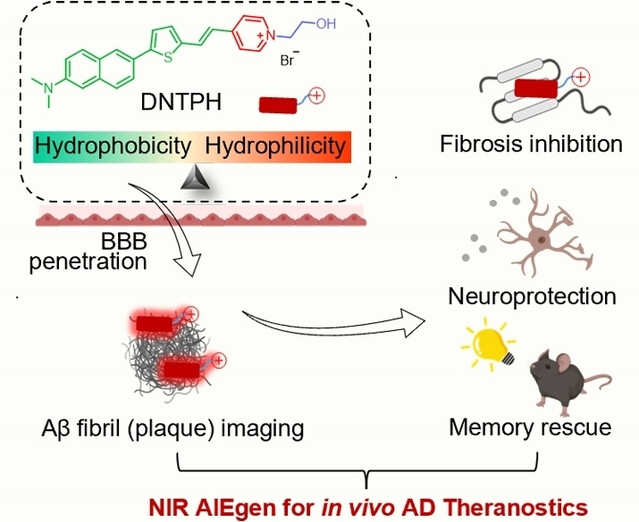
An aggregation-induced emission (AIE) probe, DNTPH, was designed by balancing hydrophobic and hydrophilic moieties. DNTPH displays excellent blood–brain barrier permeability and binds to β-amyloid Aβ42 fibrils selectively. Remarkably, DNTPH exhibits a strong inhibitory effect on Aβ fibrosis, thus attenuating Aβ-induced neurotoxicity in Alzheimer's disease (AD) mice. DNTPH serves as the first AIE in vivo theranostic agent for near-infrared imaging of Aβ42 plaques and AD therapy.
Carbocatalysis
Catalytic Properties of High Nitrogen Content Carbonaceous Materials
- First Published: 27 October 2022
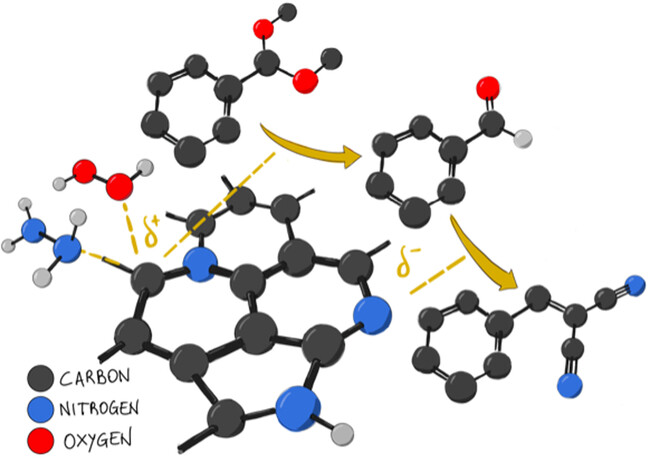
Carbon materials are attractive alternatives to metal catalysts in terms of price and reduced environmental impact. However, the influence of structural modifications on the catalytic activity of carbon materials is poorly understood. General trends in the catalytic activity of nitrogen-doped carbons are identified using a holistic approach to carbocatalysis.
Supramolecular Chemistry | Very Important Paper
Confinement-Driven Photophysics in Hydrazone-Based Hierarchical Materials
- First Published: 08 November 2022
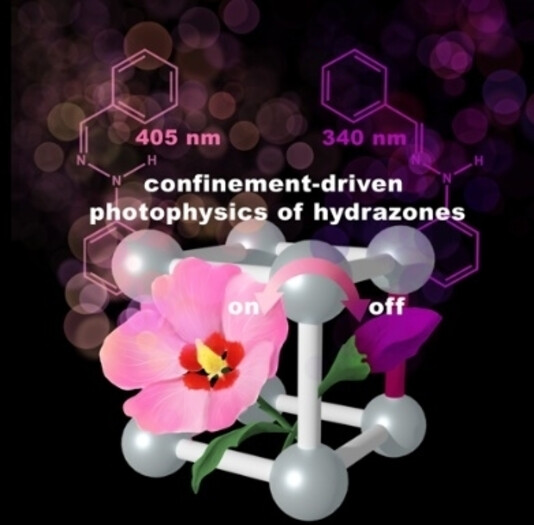
As hibiscus flowers bloom in the morning and close at night, hydrazone derivatives exhibit photoresponsive behavior as a function of an excitation wavelength. While hydrazone “flowers” wilt in the wrong environment, they blossom in a MOF “vase”. Thus, integration of hydrazone-photoswitches in proper 3D environments cultivates solution-like photophysical properties in solid-state materials and allows for modulation of energy transfer processes.
Ladder Polymers
Circularly Polarized Light Probes Excited-State Delocalization in Rectangular Ladder-type Pentaphenyl Helices
- First Published: 08 November 2022

Rectangular π-conjugated ladder polymers of one particular handedness provide a square answer to the question of delocalization of their lowest-energy photoexcitation: the coupling to vibrations makes the excitation shaky. Exciton localization is a dynamic process and the excitation “breathes” in concert with the zero-point vibrational motion.
Bioconjugation | Hot Paper
Bioconjugation via Hetero-Selective Clamping of Two Different Amines with ortho-Phthalaldehyde
- First Published: 18 November 2022
Homogeneous Catalysis | Hot Paper
Economical Access to Diverse Enantiopure Tetrahydropyridines and Piperidines Enabled by Catalytic Borrowing Hydrogen
- First Published: 14 November 2022

An unprecedented, economical one-pot access to enantiopure N−H tetrahydropyridines is achieved by coupling a few readily available substrates with commercially available 1,3-amino alcohols via catalytic borrowing hydrogen. Highly diastereoselective functionalizations of tetrahydropyridines also result in a general access to enantiopure di- and tri-substituted piperidines, which rank among the most frequent N-heterocycles in commercial drugs.
Organic Semiconductors
An Amorphous n-Type Conjugated Polymer with an Ultra-Rigid Planar Backbone
- First Published: 07 November 2022
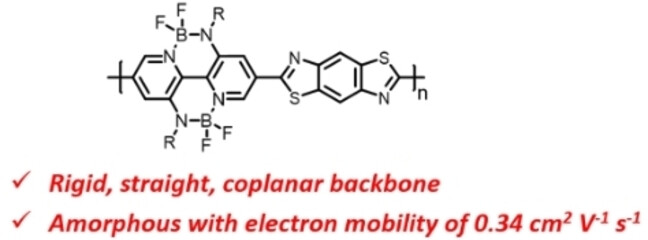
Amorphous conjugated polymers represent another kind of polymer semiconductor with a different charge transporting mechanism. An n-type conjugated polymer with rigid, straight and planar backbone has now been designed and synthesized. It is amorphous in a thin film but exhibits an electron mobility of 0.34 cm2 V−1 s−1.
Hydroamination
Skeleton-Reorganizing Coupling Reactions of Cycloheptatriene and Cycloalkenones with Amines
- First Published: 13 November 2022

An unusual catalytic coupling reaction of cycloheptatriene and cycloalkenones with amines proceeds through a skeleton-reorganization process for the selective synthesis of fused 1,2-dihydroquinolines. Mechanistic studies indicate that the reactions proceed through a retro-Mannich-type ring-opening and a subsequent intramolecular Povarov process.
White-Light-Emitting Diodes
Highly Luminescent One-Dimensional Organic–Inorganic Hybrid Double-Perovskite-Inspired Materials for Single-Component Warm White-Light-Emitting Diodes
- First Published: 14 November 2022
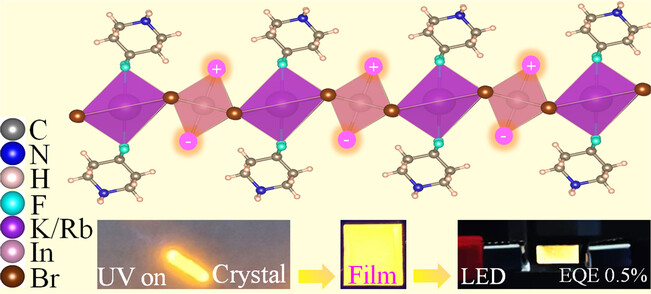
We report on a new class of 1D double perovskite-inspired materials (DFPD)2MIInBr6 (DFPD=4,4-difluoropiperidinium, MI=K+ and Rb+), which exhibit an intrinsic warm-white light emission. Further enhancement is achieved by 0.3 % Sb3+ doping, which boosts PLQY to ≈92 %. Warm white light-emitting diodes based on single component (DFPD)2KInBr6:Sb are fabricated.
Electrochromic Transition Metal Oxide
Retarding the Shuttling Ions in the Electrochromic TiO2 with Extensive Crystallographic Imperfections
- First Published: 11 November 2022
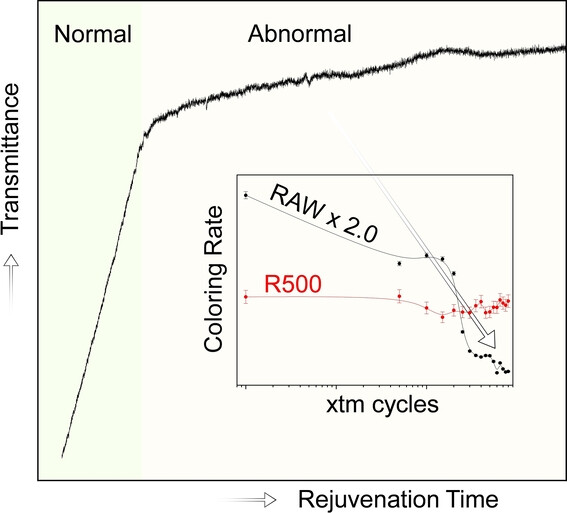
Two distinct sites for ion accommodation are found in an electrochromic transition-metal-oxide (ETMO) nanowire film by the galvanostatic transmittance evolution: the normal site and the abnormal site. Ions at the abnormal sites contribute little to coloration but retard the shuttling rate. These findings give a clear picture of the ion shuttling process, allowing the electrochromic performance to be enhanced for the design of efficient smart windows.
Metals in Medicine
Platinum-Based TREM2 Inhibitor Suppresses Tumors by Remodeling the Immunosuppressive Microenvironment
- First Published: 19 October 2022

Platinum complex OPA shows a potent chemoimmunotherapeutic effect on tumors by impeding DNA replication and inhibiting the triggering receptor expressed on myeloid cells-2 (TREM2). OPA promotes the polarization of macrophages from immunosuppressive M2 to tumoricidal M1 phenotype, and stimulates dendritic, cytotoxic T, and natural killer cells to restrain cancer cells. By transforming the tumor microenvironment, OPA overcomes the tumor resistance to platinum drugs.
Intermetallic Catalysis
Structural Evolution of Anatase-Supported Platinum Nanoclusters into a Platinum-Titanium Intermetallic Containing Platinum Single Atoms for Enhanced Catalytic CO Oxidation
- First Published: 17 November 2022
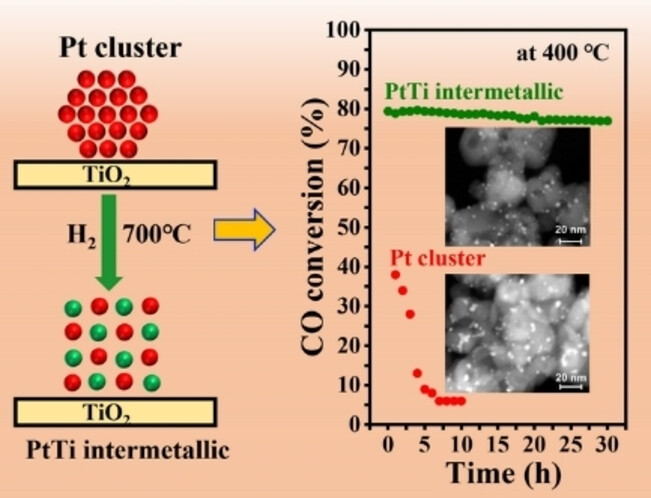
Pt clusters of 1.5 nm supported on anatase TiO2 transform exclusively into CsCl-type PtTi intermetallic compound particles that grow epitaxially along the TiO2 (101) planes after H2 reduction at 700 °C. The formation of PtTi occurs through migration of reduced metallic Ti atoms into Pt clusters. The thermally stable PtTi intermetallic exhibits enhanced catalytic activity and promoted catalytic durability for CO oxidation.
Metal–Organic Frameworks | Hot Paper
Chiral Frustrated Lewis Pair@Metal-Organic Framework as a New Platform for Heterogeneous Asymmetric Hydrogenation
- First Published: 08 November 2022
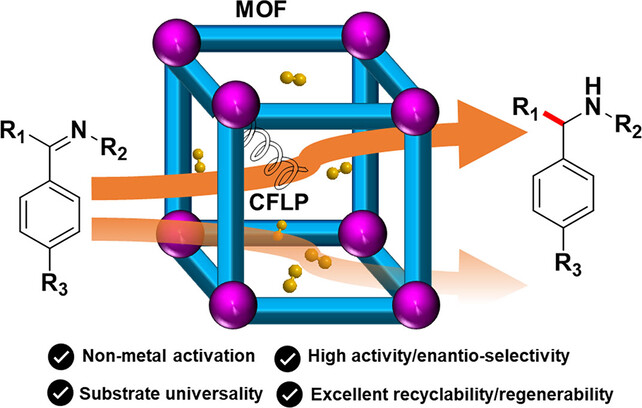
A highly active heterogeneous chiral frustrated Lewis pair system has been achieved for the first time via incorporating the rationally designed bifunctional chiral FLP molecules into MOF under the guidance of computational studies; the afforded CFLP@MOF demonstrated superb catalysis performances in heterogeneous asymmetric hydrogenation with excellent recyclability/regenerability.
Infrared Spectroscopy | Hot Paper
Infrared Diffusion-Ordered Spectroscopy Reveals Molecular Size and Structure
- First Published: 19 October 2022
Solar Cells | Hot Paper
A Multifunctional Polymer as an Interfacial Layer for Efficient and Stable Perovskite Solar Cells
- First Published: 13 November 2022
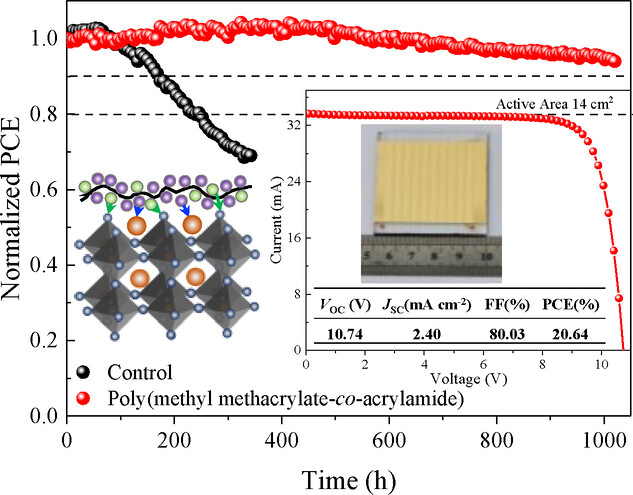
A novel multifunctional polymer, poly(methyl methacrylate-co-acrylamide), was designed and utilized to synergistically passivate the under-coordinated Pb2+ and anchor the I- of the [PbI6]4− octahedron on the surface of a perovskite film. This passivation leads to an enhancement in the open-circuit voltage from 1.12 to 1.22 V and improved stability in solar cell devices, with the device maintaining 95 % of the initial power conversion efficiency (PCE) over 1000 h of maximum power point tracking. Additionally, a large-area solar cell device was fabricated using this approach, achieving a PCE of 20.64 %.
Supramolecular Antitumor Agents | Very Important Paper
An Antitumor Dual-Responsive Host-Guest Supramolecular Polymer Based on Hypoxia-Cleavable Azocalix[4]arene
- First Published: 09 November 2022
Fluorescent Probes | Hot Paper
A Far-Red Molecular Rotor Fluorogenic Trehalose Probe for Live Mycobacteria Detection and Drug-Susceptibility Testing
- First Published: 08 November 2022

The development of a novel trehalose-based fluorogenic probe that features a molecular rotor turn-on fluorophore with exceptionally bright far-red emission is described (RMR-Tre). RMR-Tre enables rapid, no-wash, low-background fluorescence detection and drug-susceptibility evaluation of live mycobacteria, including Mycobacterium tuberculosis.
Protein Engineering
Mutability-Landscape-Guided Engineering of l-Threonine Aldolase Revealing the Prelog Rule in Mediating Diastereoselectivity of C−C Bond Formation
- First Published: 11 November 2022
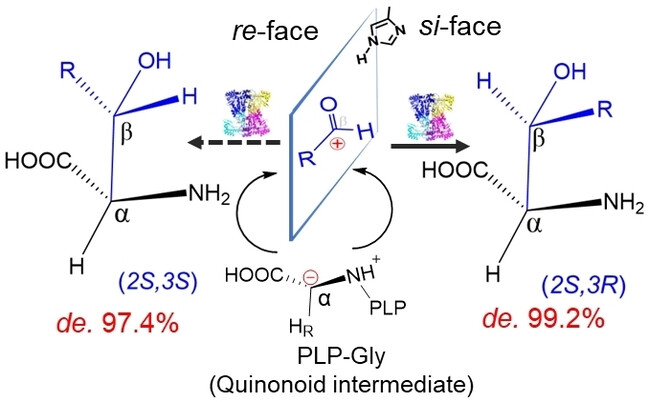
The Prelog rule in l-threonine aldolase holds that when the Cα anion of PLP-Gly attacks the carbonyl carbon atom of the aldehyde from the re-face, the (2S,3S)-configured product is formed, whereas attack from the si-face forms the (2S,3R)-configured product. Guided by this rule, mutants of LTA with improved diastereoselectivity of 99.2 %syn and 97.4 %anti were obtained.
Hydroamination
Cobalt-Catalyzed Enantioselective Hydroamination of Arylalkenes with Secondary Amines
- First Published: 07 November 2022

An excellent enantioselective hydroamination of arylalkenes with Lewis basic secondary amines was developed, via an elegant cobalt-hydride mediated oxidative hydrogen atom transfer (MHAT) process, leading to the synthesis of a series of valuable α-chiral tertiary amines in good to excellent yields and enantioselectivities.
Directed Evolution
Selecting Better Biocatalysts by Complementing Recoded Bacteria
- First Published: 07 November 2022

An in vivo selection strategy is presented, in which bacteria addicted to non-canonical amino acids (ncAAs) are complemented by enzymes that can yield these building blocks from synthetic precursors. As growth rates under selective conditions correlate with enzyme activities, serial passaging elicited better biocatalysts from populations harboring enzyme libraries. The platform was used to improve the activity of carbamoylases for ncAA-precursors.
Mechanochemistry
Off-center Mechanophore Activation in Block Copolymers
- First Published: 17 November 2022
Electrochemiluminescence | Very Important Paper
Plasmon-Enhanced Electrochemiluminescence at the Single-Nanoparticle Level
- First Published: 04 November 2022
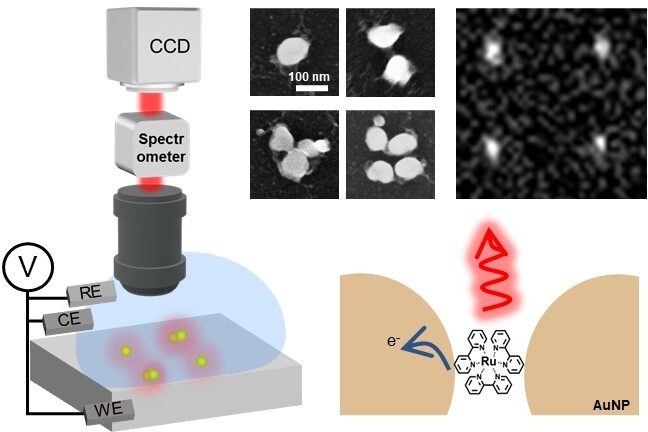
An array of well-controlled Au single particles or oligomers was printed on an electrode surface, and used as a high-throughput platform to investigate the plasmon enhanced electrochemiluminescence (ECL) at the single-nanoparticle level. This ECL microscopy can visualize and quantify the electrochemical reactions of multiple individual NPs from wide-field imaging simultaneously.
Organic Laser
Circularly Polarized Laser Emission from Homochiral Superstructures based on Achiral Molecules with Conformal Flexibility
- First Published: 14 November 2022

We report on a rational strategy to clamp the molecular conformation and facilitate parallel packing of achiral D-A molecules. This leads to spontaneous symmetry breaking during crystallization. When this emergent homochirality is coupled with the optical gain of the molecules, the homochiral crystals can be explored as excellent circularly polarized micro-lasers with low lasing threshold (16.4 μJ cm−2) and high dissymmetry factor glum (0.9).
Organic Electronics
Hierarchical Integration of Organic Core/Shell Microwires for Advanced Photonics
- First Published: 09 November 2022
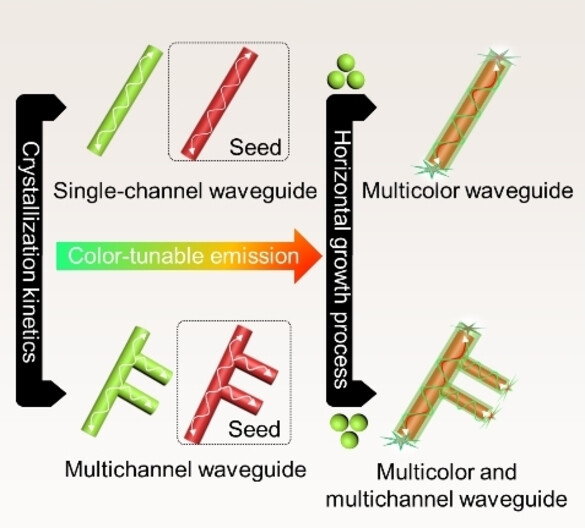
Using a series of organic charge transfer cocrystals with structural similarity and physicochemical tunability, we demonstrate the precise construction of various types of hierarchical organic microwires. Branch microwires with multichannel waveguide and core/shell microwires with multicolor waveguide performance can be integrated into branch core/shell microwires for realizing optical logic gates with multi-encoding functions.
Porous Organic Polymers | Very Important Paper
Electronic Effect-Modulated Enhancements of Proton Conductivity in Porous Organic Polymers
- First Published: 11 November 2022
Transmembrane Transporters | Hot Paper
Synthetic Monosaccharide Channels: Size-Selective Transmembrane Transport of Glucose and Fructose Mediated by Porphyrin Boxes
- First Published: 16 November 2022
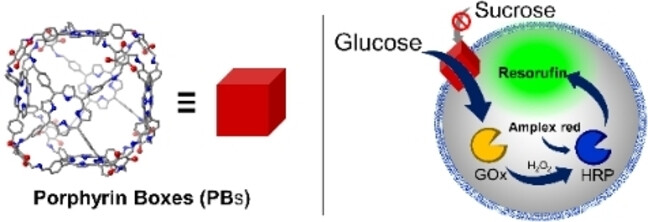
Shape-persistent organic cages, porphyrin boxes (PBs), have been used to construct synthetic monosaccharide channels. These cages facilitate the transmembrane transport of glucose and fructose through their windows, while impeding the transport of larger sized sugars because of the limited size of the cage windows, thus facilitating size-selective transport. Live cells treated with the PBs show glucose uptake and enhanced cell viability.
Photosensitizers | Hot Paper
Toward Precise Antitumoral Photodynamic Therapy Using a Dual Receptor-Mediated Bioorthogonal Activation Approach
- First Published: 14 November 2022
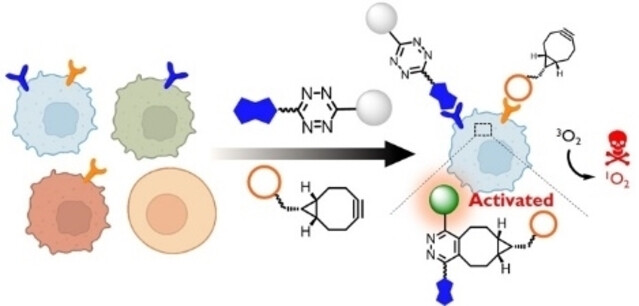
The internalization of two bioorthogonal components mediated by the corresponding receptors, followed by inverse electron-demand Diels–Alder reaction leads to specific activation of the photodynamic action inside the target cells. This dual receptor-mediated bioorthogonal activation approach works as an AND logic device that can greatly enhance the precision of antitumoral photodynamic therapy.
Electrochemiluminescence
Interparticle Charge-Transport-Enhanced Electrochemiluminescence of Quantum-Dot Aerogels
- First Published: 08 November 2022
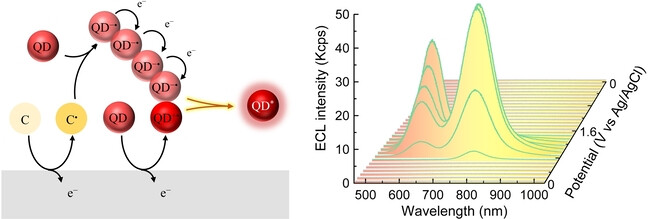
The long-term ambiguity in mechanistic understanding of charge-transfer routes toward electrochemiluminescence generation has been deciphered in this study through the design of highly tunable quantum dot aerogels as novel luminophores. The interparticle charge-transfer route has been explicitly demonstrated and selectively enhanced based on the strong electronic coupling of quantum dot aerogels.
Systems Chemistry
Communication and Cross-Regulation between Chemically Fueled Sender and Receiver Reaction Networks
- First Published: 10 November 2022
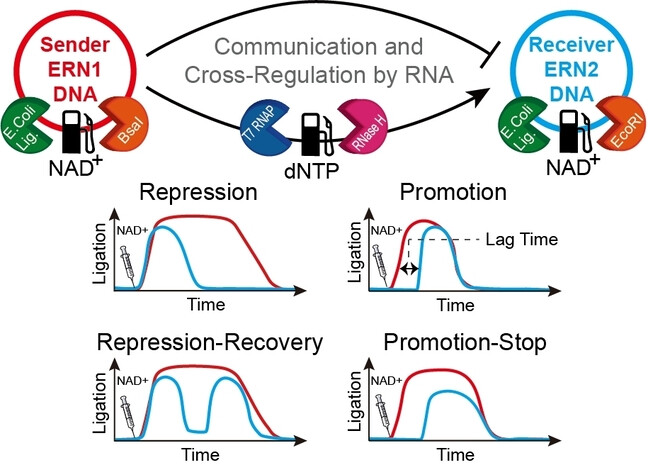
Two chemical-fuel-driven non-equilibrium DNA-based enzymatic reaction networks have been coupled with a RNA transcription system to achieve cross-regulation and feedback between each other. This approach gives different types of signal outputs, including repression, promotion, repression-recovery, and promotion-stop.
Redox Flow Batteries | Very Important Paper
Aggregation of Electrochemically Active Conjugated Organic Molecules and Its Impact on Aqueous Organic Redox Flow Batteries
- First Published: 16 November 2022
DNA Computing
Programming Non-Nucleic Acid Molecules into Computational Nucleic Acid Systems
- First Published: 14 November 2022
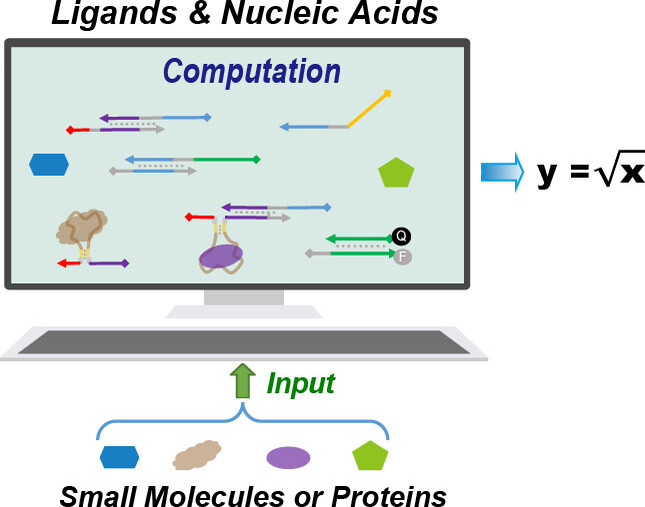
With utilization of conformationally controlled ligand converters, different kinds of non-nucleic acid molecules, including both small molecules and proteins, can be integrated into nucleic acid computation to construct circuitries with increased complexity and scalability and to even perform algorithmic calculations. This hybridized system establishes a universal platform for molecular computation.
Metal-Organic Frameworks | Hot Paper
Conformational Control of Organocatalyst in Strongly Brønsted-Acidic Metal-Organic Frameworks for Enantioselective Catalysis
- First Published: 08 November 2022
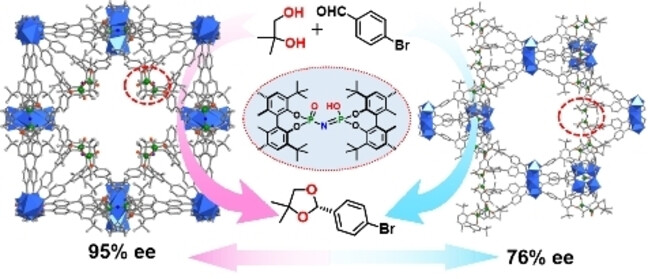
Reticulation of chiral 1,1′-biphenol-based imidodiphosphoric acid (IDP) into two Dy metal-organic frameworks (MOFs) allows controlling the organocatalyst conformations and local chiral microenvironments. The MOF containing the 4-connected IDPs has a less compact shape and can be an efficient and recyclable heterogeneous Brønsted acid catalyst for the challenging asymmetric O,O-acetalization of diol and aldehyde with up to 96 % ee.
Cycloparaphenylenes
Synthesis of Twisted [n]Cycloparaphenylene by Alkene Insertion
- First Published: 09 November 2022
![Synthesis of Twisted [n]Cycloparaphenylene by Alkene Insertion](/cms/asset/595e8774-f14b-4b76-bb9b-318602b07bea/ange202214960-toc-0001-m.jpg)
Mono-alkene-inserted [n]cycloparaphenylenes ([n]CPP) 1 with n=6, 8, and 10, mono-ortho-phenylene-inserted [6]CPP 2, and di-alkene-inserted [n]CPP with n=4, 6, and 8 were synthesized by inserting alkene or ortho-phenylene units into a CPP skeleton. 1 and 2 exhibited a Möbius topology only in the solid state, but mono-alkene-inserted [6]CPP with eight 1-pyrrolyl groups preserved the Möbius topology even in solution.
Synthetic Methods
Triflylpyridinium Enables Rapid and Scalable Controlled Reduction of Carboxylic Acids to Aldehydes using Pinacolborane
- First Published: 15 November 2022

A rapid and scalable synthesis of aldehydes from carboxylic acids is achieved by employing pinacolborane as a reducing agent and a triflylpyridinium as an activating reagent. Theoretical studies exhibit that the reduction of acylpyridinium requires a lower activation free energy than that of product aldehyde. This method features a wide substrate scope. Flow synthesis and the synthesis of deuterated aldehydes are achieved.
Fluorescent Probes | Hot Paper
Enabling Photo-Crosslinking and Photo-Sensitizing Properties for Synthetic Fluorescent Protein Chromophores
- First Published: 12 November 2022
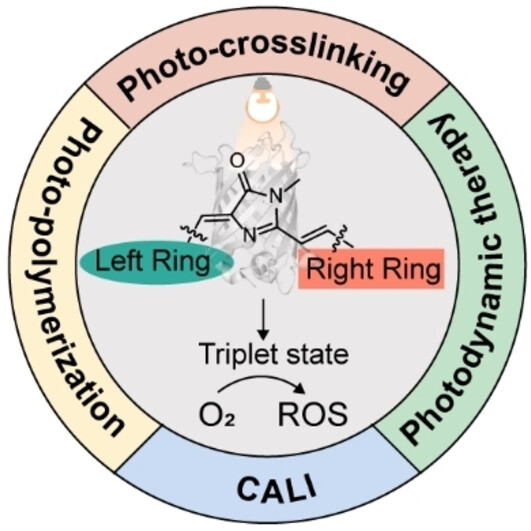
This work discovered that fluorescence protein chromophore analogs can undergo triplet excitation state, enabling photo-crosslinking and photo-sensitizing chemistries. Exploration of these synthetic fluorescent protein chromophores resulted in photo-crosslinkers for biomolecules, photo-catalysts for organic reactions, and photosensitizers for chromophore-assisted light inactivation and photodynamic therapies.
Supercapacitors
High Power- and Energy-Density Supercapacitors through the Chlorine Respiration Mechanism
- First Published: 20 November 2022
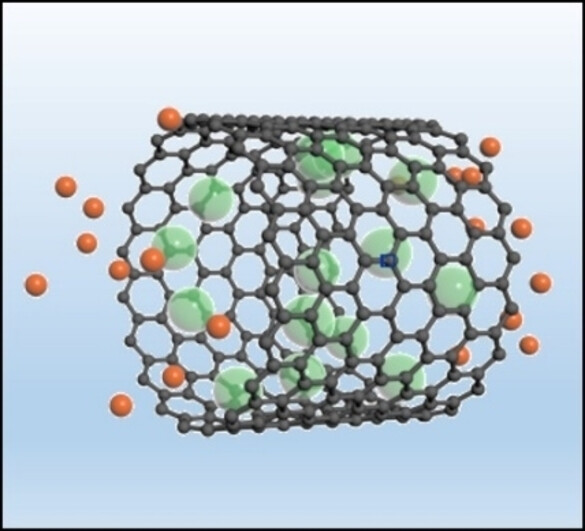
We report an unprecedentedly high power- and energy-density supercapacitor through the chlorine respiration in porous carbon materials. Both electrochemical results and theoretical calculations show that porous carbon with pore size around 3 nm delivers the best chlorine evolution and adsorption performance.
Fullerenes
Near-Infrared-Absorbing Chiral Open [60]Fullerenes
- First Published: 10 November 2022
![Near-Infrared-Absorbing Chiral Open [60]Fullerenes](/cms/asset/92acaa1a-181f-45a2-bd2c-bd5a6433ee06/ange202215380-toc-0001-m.jpg)
A dimethylaminocarbene-mediated orifice expansion gave the first near-infrared-absorbing chiral open [60]fullerenes. The introduced aminomethylidene moiety is well-conjugated with the fullerene cage, thus considerably elevating the HOMO level as supported by the electrochemical analysis. The optical resolution revealed a large dissymmetry factor of gabs=±0.12 at 820 nm in o-dichlorobenzene.
Hydrogen Oxidation Reaction
The Role of Discrepant Reactive Intermediates on Ru-Ru2P Heterostructure for pH-Universal Hydrogen Oxidation Reaction
- First Published: 10 November 2022
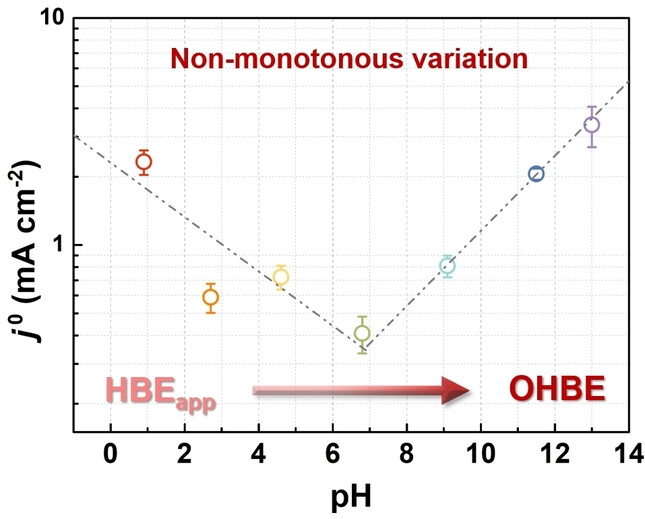
The hydrogen oxidation reaction (HOR) performance of Ru-Ru2P/C heterostructure is explored in the whole pH range. Unexpectedly, a non-monotonous relationship between the HOR activities and the pH of electrolytes is observed. Moreover, its HOR performance in alkaline media is much higher than that in acidic media, highlighting the role of discrepant intermediates for pH-universal HOR.
Asymmetric Catalysis
Umpolung Asymmetric 1,5-Conjugate Addition via Palladium Hydride Catalysis
- First Published: 14 November 2022
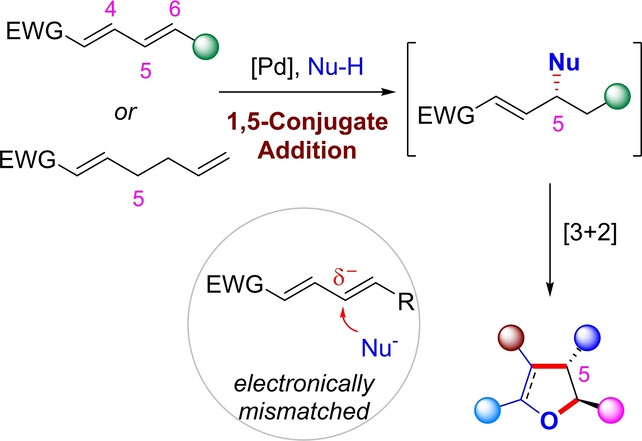
An unconventional umpolung protocol was demonstrated for novel 1,5-conjugate additions via palladium hydride catalyst. Three catalytic reaction modes including 1,5-addition cascade with inter- and intramolecular [3+2] cyclization and migratory 1,5-addition were established via palladium or palladium/organo-cocatalysis.
Asymmetric Catalysis | Hot Paper
Stereodivergent Construction of Csp3−Csp3 Bonds Bearing Vicinal Stereocenters by Synergistic Palladium and Phase-Transfer Catalysis
- First Published: 15 November 2022
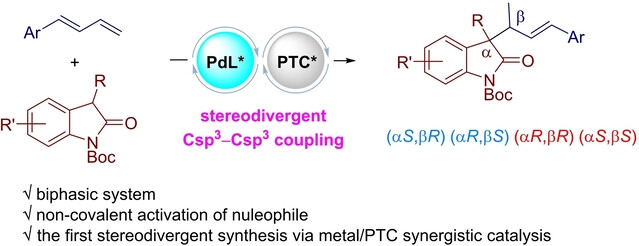
A stereodivergent Csp3−Csp3 coupling of 1,3-dienes with oxindoles was achieved by synergizing a palladium and a chiral phase-transfer catalyst in a biphasic system. Both the syn and anti products, which have vicinal quaternary and tertiary stereocenters, could be selectively achieved in good yields with high enantio- and diastereoselectivities. This is the first stereodivergent synthesis via metal/phase-transfer catalysis.
Mechanochemistry | Hot Paper
Mechanoredox Catalysis Enables a Sustainable and Versatile Reversible Addition-Fragmentation Chain Transfer Polymerization Process
- First Published: 17 November 2022

Coupling mechanochemistry and single-electron transfer processes in a ball mill facilitates an efficient reversible addition-fragmentation chain transfer polymerization reaction. A versatile mechanoredox process is developed to synthesize macromolecules with good molar mass control. This method serves as an alternative to access complex polymers that may be difficult to access using traditional solution-state processes.
Membranes
Mixed Matrix Membrane with Penetrating Subnanochannels: A Versatile Nanofluidic Platform for Selective Metal Ion Conduction
- First Published: 14 November 2022
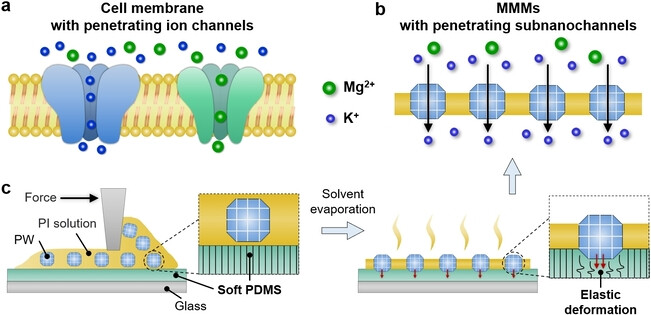
Inspired by the unique structure of cell membranes, a mixed-matrix membrane (MMM) with penetrating subnanochannels was developed based on a soft-substrate assisted solution casting method for selective conduction of monovalent metal ions. Thanks to the diversity of nanoporous materials and polymer matrix, we expect that the penetrating MMMs could be developed into a versatile nanofluidic platform and offer new possibilities for practical applications.
Antibiotika | Hot Paper
Darobactine mit Überlegener Antibiotischer Aktivität Generiert durch Strukturgeleitetes Kryo-EM-Biosynthese-Design
- First Published: 29 October 2022

Die strukturelle Evaluation des Bam-Komplexes mit Darobactin 9 mittels Kryo-EM, in Verbindung mit der Bewertung der Bioaktivität führte zur Biosynthese neuer Derivate mit erhöhter Aktivität gegen Gram-negative Krankheitserreger, einschließlich klinisch relevanter Isolate. Das derzeit vielversprechendste Derivat Darobactin 22 resultierte aus dem struktur- und aktivitätsgeleiteten Ansatz und zeigte eine bis zu 128-fach erhöhte Aktivität im Vergleich zum nativen Darobactin A.
Halogenierung
Kontrolle der Selektivität in Shuttle-Heterodifunktionalisierungen: Elektrochemische Transfer-Halothiolierung von Alkinen
- First Published: 06 November 2022

Die Shuttle-Katalyse entwickelt sich zu einer wirksamen Strategie, um eine noch nie dagewesene synthetische Flexibilität in der organischen Synthese zu erreichen. In diesem Artikel zeigen wir ein seltenes Beispiel für eine Shuttle-Heterodifunktionalisierung zur Übertragung von zwei verschiedenen funktionellen Gruppen zwischen β-Halogensulfiden und Alkinen mit ausgezeichneter Chemo-, Regio- und Stereoselektivität über einen gepaarten Elektrolyseprozess. Dadurch eröffnen sich neue Möglichkeiten für selektive Shuttle-Difunktionalisierungsreaktionen.
Organische Batteriekathoden
Anionen-Einlagerungschemie organischer Kathoden für zweiwertige Metallbatterien mit hoher Energie und hoher Leistungsdichte
- First Published: 21 October 2022
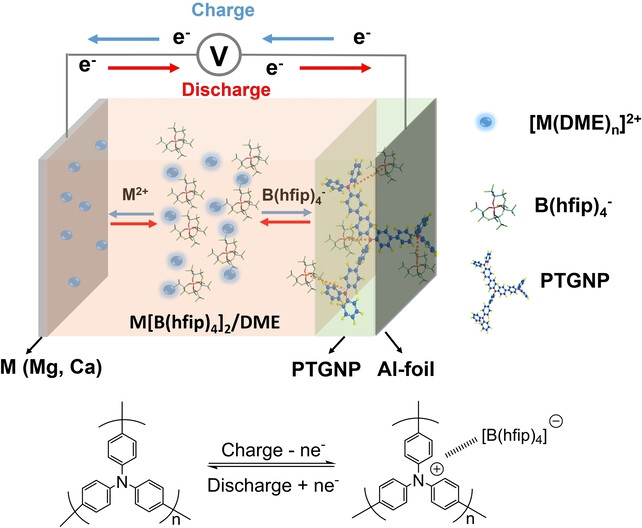
A polytriphenylamine (PTPAn) composite cathode is employed for high-voltage (∼3 V) rechargeable Mg and Ca batteries based on the tetrakis(hexafluoroisopropyloxy) borate [B(hfip)4] anion storage chemistry. Mechanistic studies elucidate the unique redox reactivity of the amine moieties in the active cathode material. These divalent metal batteries exhibit both high energy and high power-density and long cycle-life.
Organische Batterien
Kombination von Deep Eutectic Solvents mit TEMPO-basierten Polymerelektroden: Einfluss des Molaren Verhältnisses auf das Elektrodenverhalten
- First Published: 06 November 2022
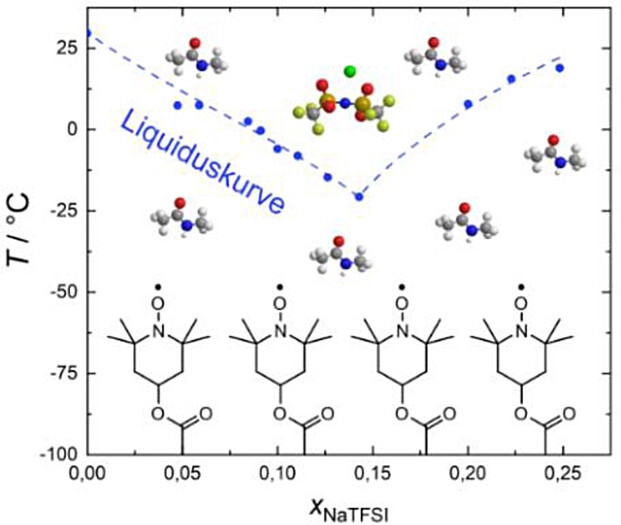
Nachhaltige Batterietechnologie: Die Kombination von Deep Eutectic Solvents (DESs) mit TEMPO-basierten Elektroden eröffnet einen neuen Weg zur umweltfreundlichen Energiespeicherung in vollorganischen Batterien. Insbesondere das eutektische Gemisch des DES aus Natriumbis(trifluormethansulfonyl)imid und N-Methylacetamid ermöglicht stabiles und effizientes Zykeln der Polymerelektroden.




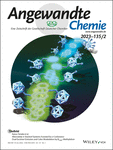
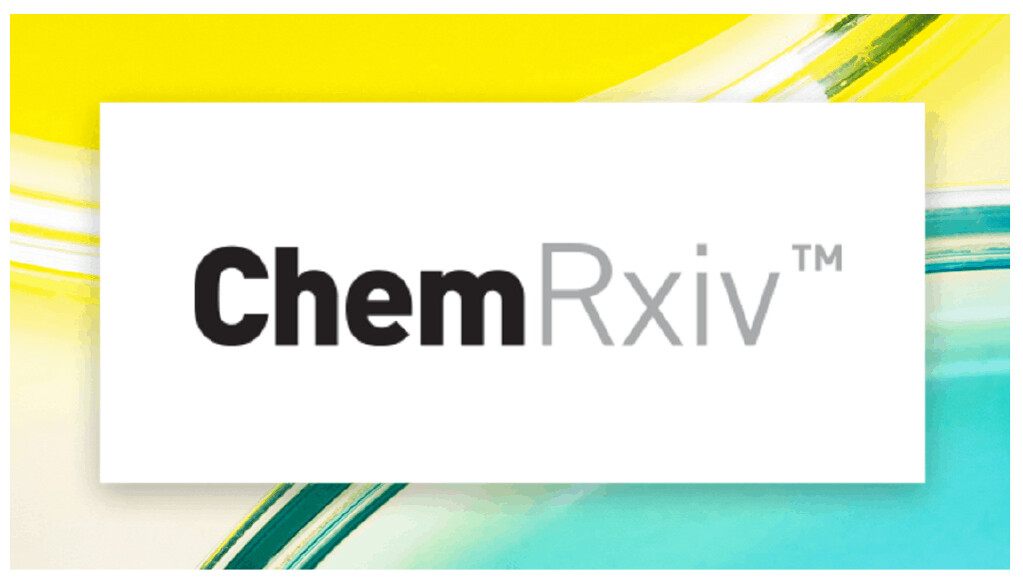

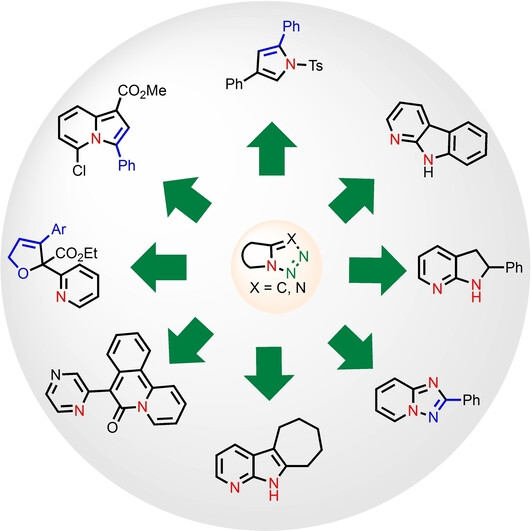
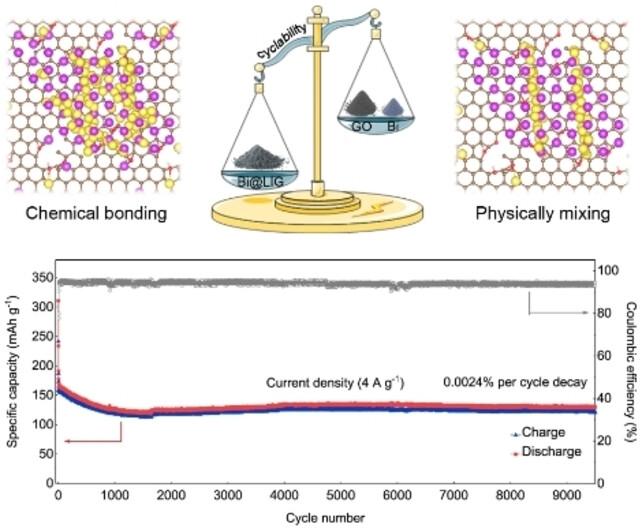

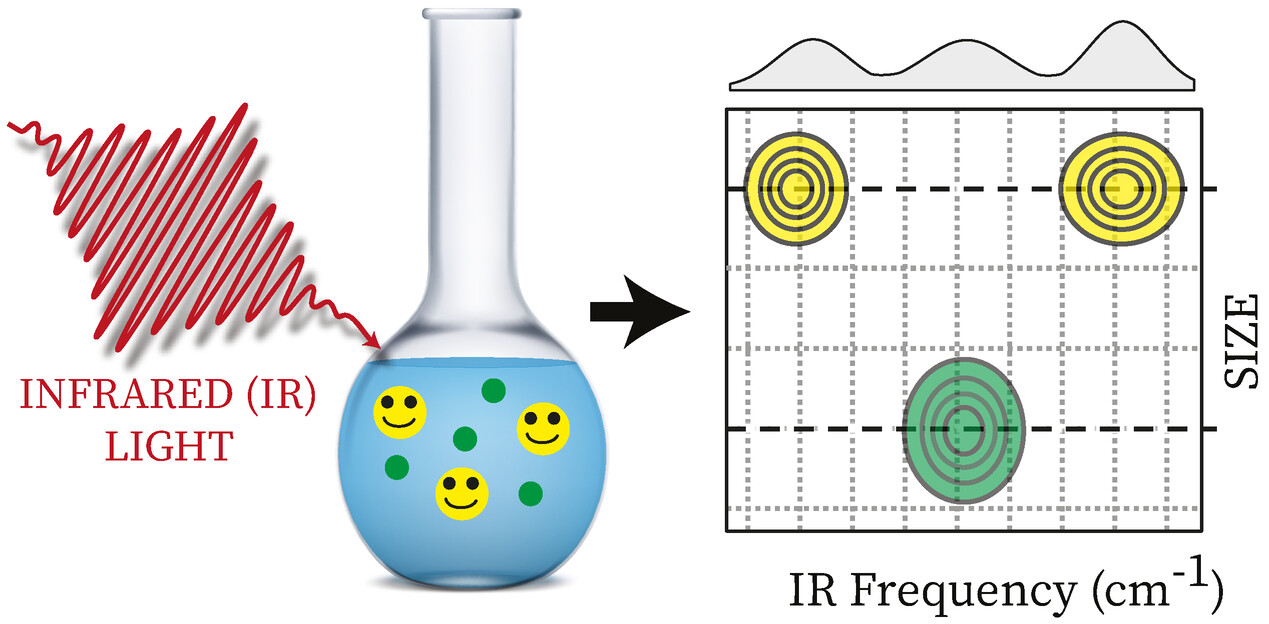
![An Antitumor Dual-Responsive Host-Guest Supramolecular Polymer Based on Hypoxia-Cleavable Azocalix[4]arene](/cms/asset/b6baf016-f9f2-411a-86cf-8fc5d2918d97/ange202213578-toc-0001-m.jpg)

